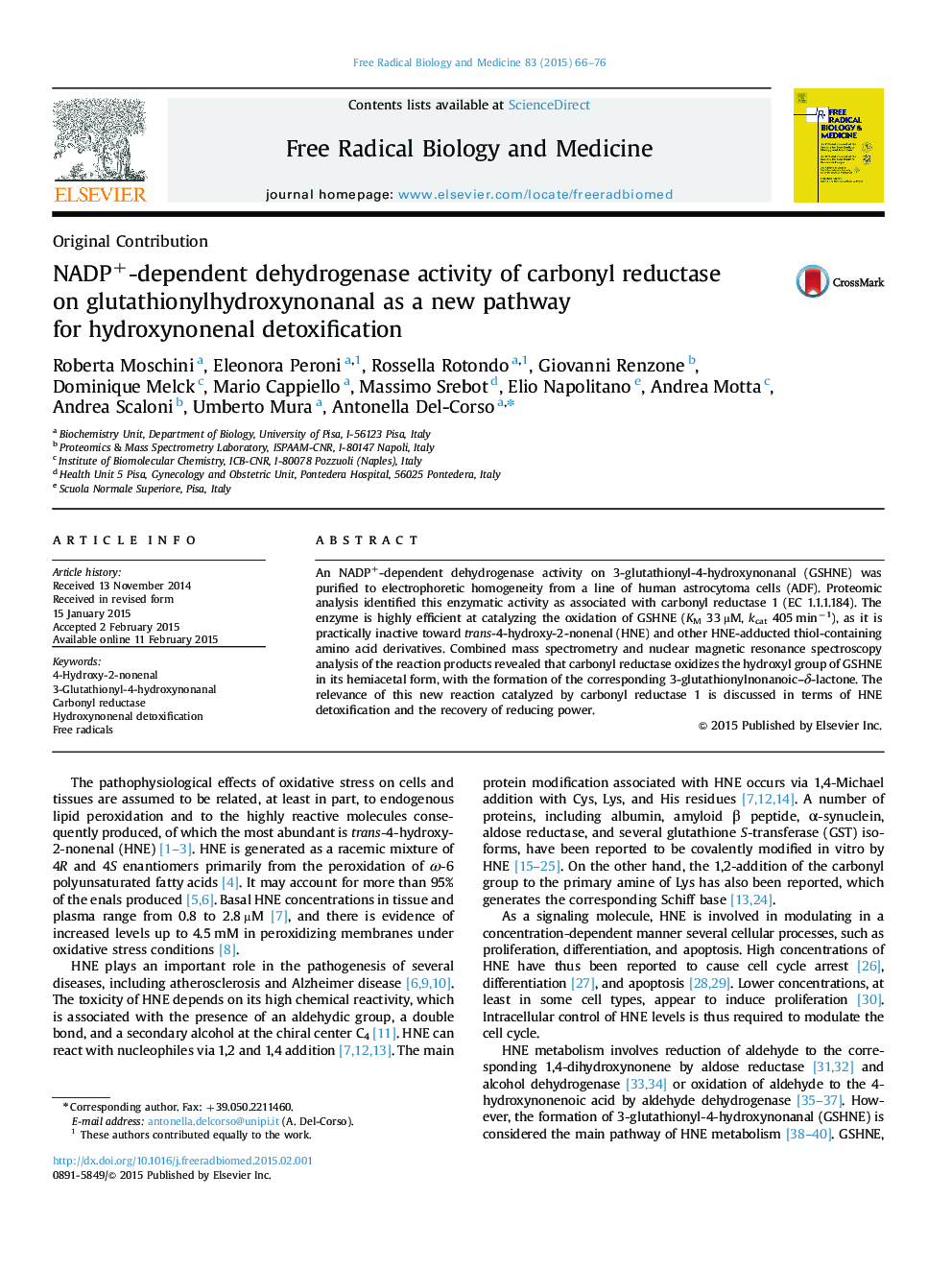| Article ID | Journal | Published Year | Pages | File Type |
|---|---|---|---|---|
| 1907954 | Free Radical Biology and Medicine | 2015 | 11 Pages |
•Glutathionylhydroxynonanal is susceptible to NADP+-dependent oxidation catalyzed by carbonyl reductase.•Glutathionyl-4-hydroxynonanoic acid δ-lactone is the main product of the reaction.•The reaction may lead to hydroxynonenal detoxification while recovering cell reducing power.
An NADP+-dependent dehydrogenase activity on 3-glutathionyl-4-hydroxynonanal (GSHNE) was purified to electrophoretic homogeneity from a line of human astrocytoma cells (ADF). Proteomic analysis identified this enzymatic activity as associated with carbonyl reductase 1 (EC 1.1.1.184). The enzyme is highly efficient at catalyzing the oxidation of GSHNE (KM 33 µM, kcat 405 min−1), as it is practically inactive toward trans-4-hydroxy-2-nonenal (HNE) and other HNE-adducted thiol-containing amino acid derivatives. Combined mass spectrometry and nuclear magnetic resonance spectroscopy analysis of the reaction products revealed that carbonyl reductase oxidizes the hydroxyl group of GSHNE in its hemiacetal form, with the formation of the corresponding 3-glutathionylnonanoic–δ-lactone. The relevance of this new reaction catalyzed by carbonyl reductase 1 is discussed in terms of HNE detoxification and the recovery of reducing power.
Graphical abstractFigure optionsDownload full-size imageDownload high-quality image (258 K)Download as PowerPoint slide
